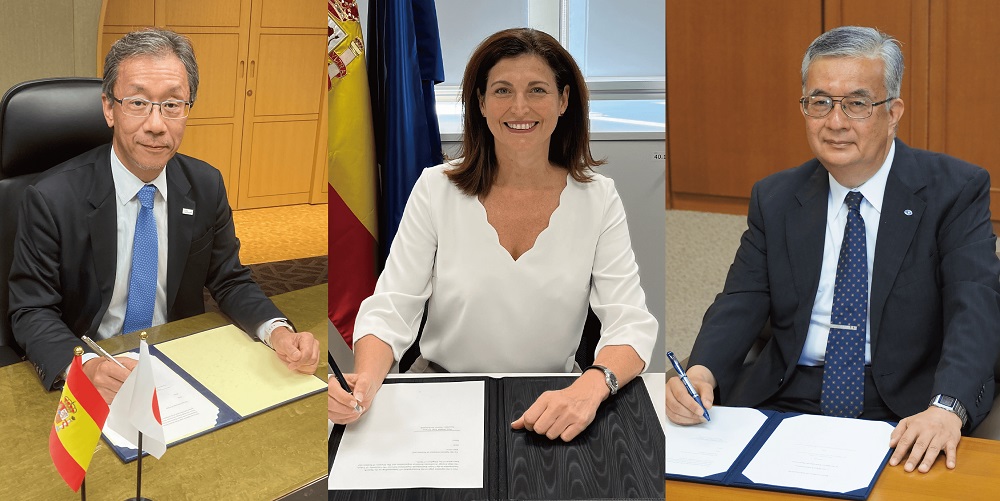
The Ministry of Science and Innovation (MCIN) of the Kingdom of Spain, High Energy Accelerator Research Organization (KEK) and The University of Tokyo (UTokyo) signed a memorandum of understanding (MoU), which aimed to promote the Hyper-Kamiokande international scientific research project, whose main detector has been under construction with plans to start operation in 2027 at Kamioka, Hida City, Gifu Prefecture in Japan. Nineteen countries showed their interest in participating in this Japan-led project and the Kingdom of Spain is the second nation to sign MoU following Poland in February.
UTokyo President Teruo Fujii, KEK Director General Masanori Yamauchi and MCIN Secretary General for Research Raquel Yotti exchanged signatures by post until the end of August 2022.
According to the MoU, the Spanish Hyper-Kamiokande Consortium has been organized by nine institutions: Center of Astroparticles and High Energy Physics (CAPA), University of Zaragoza, Donostia International Physics Center (DIPC), Institute of High Energy Physics (IFAE), Laboratorio Subterraneo de Canfranc (LSC), University Autonoma Madrid (UAM), University of Girona (UdG), University of Oviedo (UO), Universitat Politecnica de Valencia (UPV), University of Santiago de Compostela (USC). Development, production, and installation of photosensor protection covers, ventilation system, geomagnetic compensation coil system, electronics circuit modules, radiation sources for calibration, and the near detector are their potential contributions.
The Hyper-Kamiokande detector is planned to have a fiducial mass eight times larger than its predecessor detector, Super-Kamiokande, and it is equipped with newly-developed high-sensitivity photosensors. The aim of the project is to elucidate the Grand Unified Theory and the history of the evolution of the universe through an investigation of proton decay and CP violation (the asymmetry between neutrinos and antineutrinos), together with the observation of neutrinos from supernova explosions. The budget of the construction was approved in the Japanese Diet in February 2020, which marked the official start of the project. The construction has gotten into full swing with the access tunnel excavation for the experimental site which started in May 2021.
